|
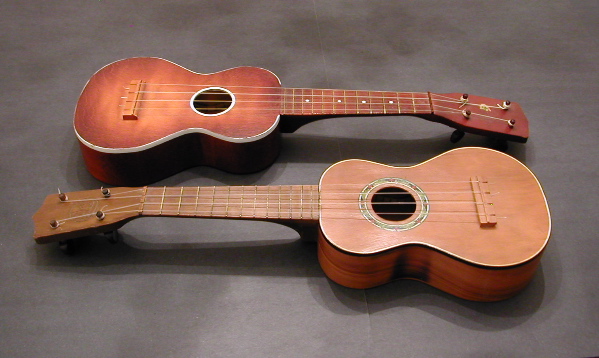
Two ukuleles from the 1920's: The one on top is a plywood
Harmony uke and the one on the bottom is a Mauna Loa, an inexpensive
line made by Lyon and Healy. Both of these have wooden tuning
pegs which mostly were not used after the late twenties. The
Mauna Loa is made out of nissa wood which was not used by
any other company than Lyon and Healy as far as I know. You
should resist your initial inclination to replace the wooden
tuning pegs because they belong on these models and work fine
when you get used to them.
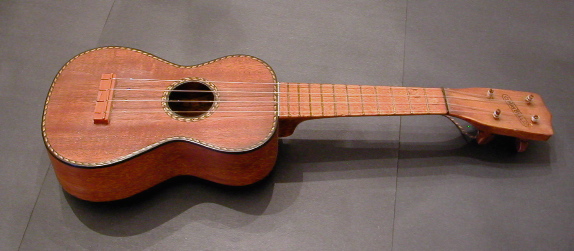
This type of ukulele probably from the 1920's is not rare
or expensive. The brand is "MayBell" but this gives
no real information about who actually made it because identical
ukes were sold with other brand names. As is common the 12th
fret was missing and was replaced with steel since I couldn't
find brass. This uke plays well and has a good tone and intonation.
It is solid mahogany.
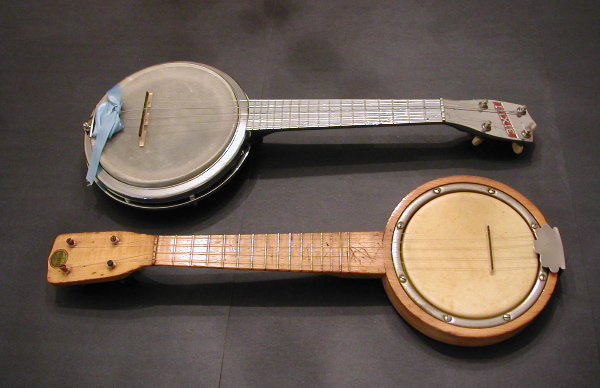
Banjo ukuleles were very popular during the 1920's. The one
pictured here with the blue ribbon is an infamous Dixie banjo
uke usually said to have been made in the 1950's, but in this
case, judging by the tuners it may have been from much earlier. Contrary to the usual description, the Dixie banjo ukulele appears to be made of cast zinc with chrome plating. For more about the Dixie banjo uke look at the Repair Gallery page of this website.Click here and you can listen to the Dixie banjo ukulele playing 12th St. Rag. The ukulele on the bottom of the picture is a "LaPacific"
a brand I have never encountered before. There is an exact
double of this one advertised in the 1919 Sears catalog. Note
that it has wooden tuning pegs.
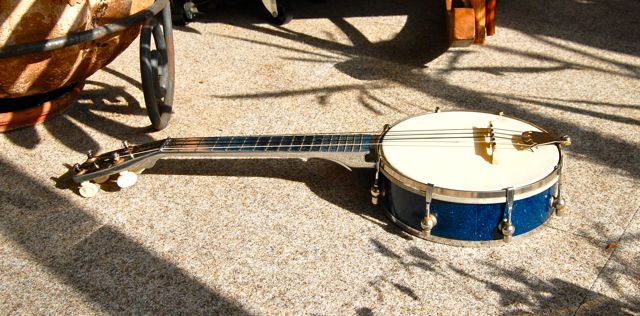
The Werco banjo ukulele pictured above, one of the most beautiful ever made, has the same chrome-plated metal neck as the Dixie banjo ukulele. The pot is made from plywood coated with blue metal-flake plastic that really sparkles. The head is made from plastic, not vellum. The action can be easily adjusted by changing the angle of the neck with the screws that attach the neck to the body. This can be done even with the ukulele tuned up to pitch. This banjo ukulele is easy to play and sounds great.
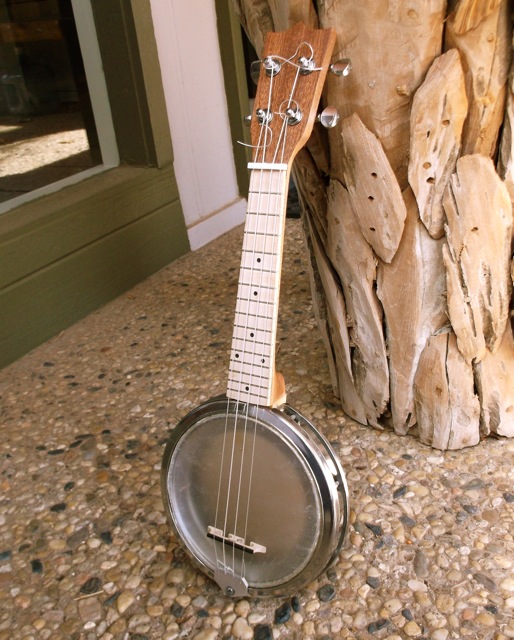
Dixie banjo ukulele modern upgrade. The original metal nrck has been replaced with a wider, more comfortable wooden neck with geared tuners. The original vellum has been replaced with a natural calfskin vellum.
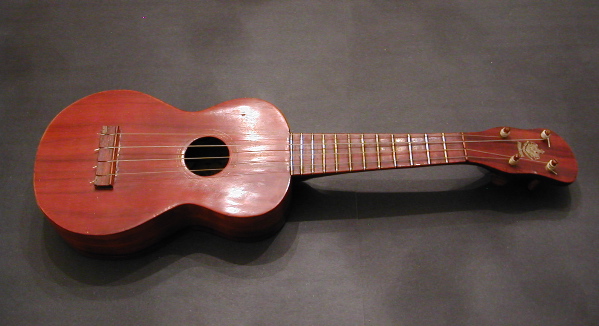
Hawaiian Tabu ukulele: Made around 1915, in Hawaii, this
uke is stamped inside with a special "TABU" logo,
shown below which was used by the Hawaiian ukulele makers
to signify a ukulele that was truly made in Hawaii from the
"Hawaiian" ukuleles made in New York, and Chicago.
Notice how the width of the neck narrows as it goes from the
body to the nut. This is often the case with the very old
ukuleles and will make it hard to play unless you have very
small hands. Notice that the neck of the Mauna Loa ukulele,
shown above, does not taper nearly as much as the one on the
Tabu ukulele.
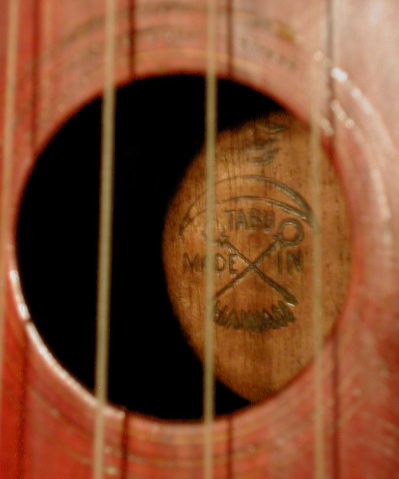
This is the TABU logo referred to in the preceding paragraph
used to distinguish the genuine Hawaiian ukuleles from ones
made in the US mainland.
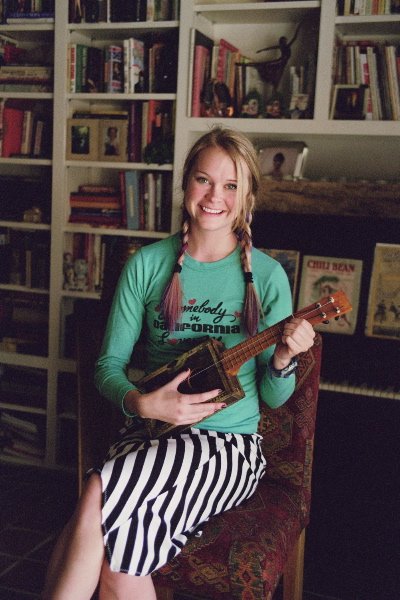
Former biology nerd with politically-incorrect cigar-box
uke.
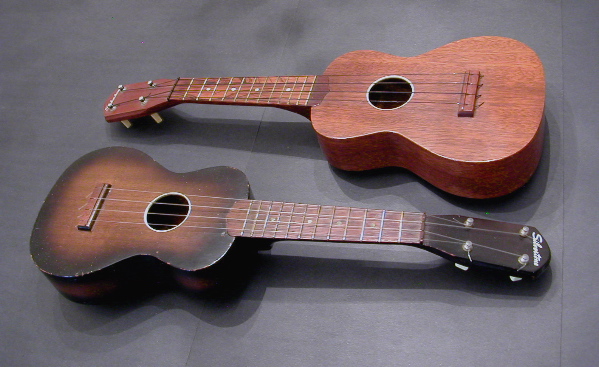
Silvertone Ukuleles: These ukuleles are of the Silvertone
brand and were made by Harmony and sold at Sears. They are
of all-wood solid mahogany construction and are a little larger
than a soprano Martin ukulele. They can be found at prices
as low as $50.00 if you are not too picky about the finish.
New ukuleles of similar quality will be priced at over $150.00.
The one with the sunburst finish appears to be much older
than the plain one and in excellent condition would sell for
a lot more than the plain one. Since this one is not in very
good condition it was cheap.
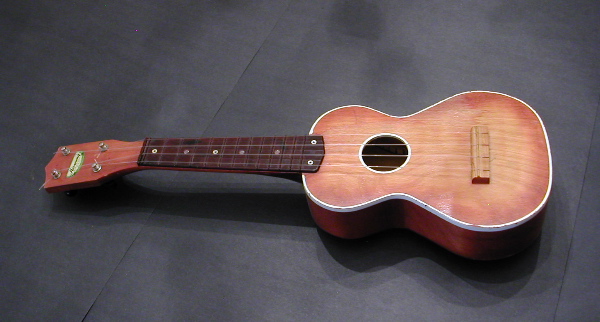
Harmony Ukulele: This is typical of the most common vintage
uke you find on eBay and at flea markets. Made by Harmony
out of low density plywood, they have an excellent tone but
are not as loud as the solid mahogany models. The older ones
with the wooden tuning pegs seem to have a better tone and
are a little louder, maybe because the wood has had more years
to dry. Often, having a ukulele that is not loud is an advantage
for the amateur vocalist who is not likely to sing with a
lot of volume. On many amateur recordings. the vocal is drowned
out by the ukulele. In the 1920's ukuleles were played in
bands and many of the solid mahogany ukes from that era are
extremely loud. When you get the Harmony ukuleles with the
plastic fretboard, the action is usually too high and the
bridge, zero fret, and nut must be carefully notched to lower
the action if this has not already been done by a previous
owner. When the action is properly adjusted, the intonation
is very good--the plastic fretboard is usually free from the
too-high frets that occur with metal frets. These ukuleles
can often be found for less than $35.00.
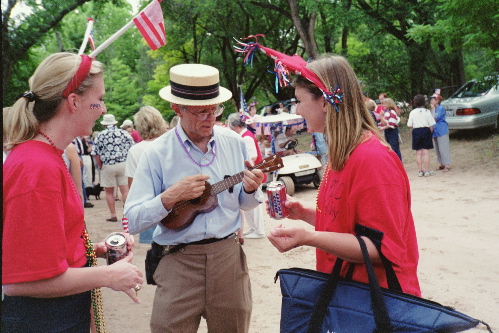
Ukulele Player: Yours truly with native girls who may start
music studies.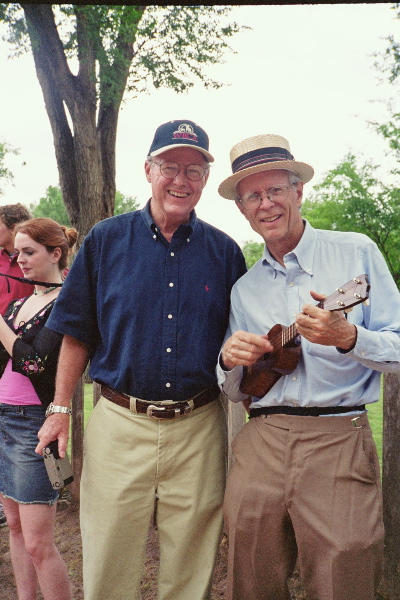
Uke fun: Yours truly with a local chief or "big shot".
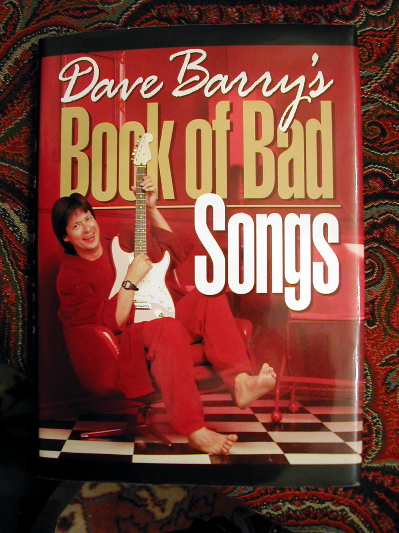
Dave Barry is not uking: For me this is the funniest book
that Dave Barry ever wrote, and he didn't even have to think
up all the jokes himself; he just quotes from popular songs
of the sixties, seventies and eighties and provides a little
commentary. If you are under forty you may not see the point,
however, since the crazy humor depends on a vague awareness
of the steep decline in the quality of lyrics of popular songs
that occurred post fifties when the target audience of the
major record companies shifted toward the bubble-gum set.
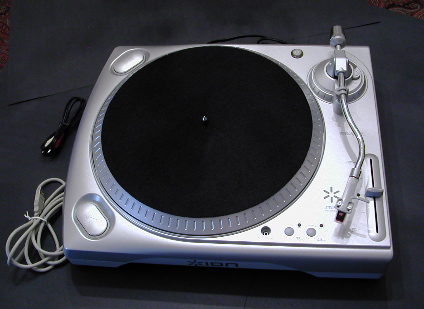
Ion USB Turntable. Those who have read my book, the UKULELE
PLAYERS GUIDE, will know that I have found that vinyl records
are the cheapest and often the only way to get the best performances
of the best music. With this device you can covert records
(and tapes) to digital format and put them on your Ipod. The
software included wouldn't work on my Apple OS9.1 IBook so
I downloaded the free Coaster software which did work. For
more about this, look in the articles section on this site.
|